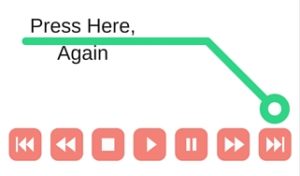Editor’s Note: This blog was written when Management 3.0’s parent company was called Happy Melly One and when we had launched an experimental project called Happy Melly, which focused on happiness at work. Today Happy Melly has been absorbed by Management 3.0, which is part of the Happy Melly Group.
by Patrick Verdonk
Once upon a time, not long ago, a company created a 240 plus slide document, which explained to 100.000 contracted employees how the company worked and was organized. The document explained the Operating Model (at a high level…) very thoroughly.
For those employees who wanted to know who to talk about a certain topic, they also created a 50 page organization chart. Everyone was included from the CEO down four reporting layers below him. The company had created the ability for everybody to find out who reports to whom!
There was comfort in the top-down approach to user processes. It was the perfect waterfall approach, which could only be captured in very detailed plans. Everybody got assigned specific tasks in the plan, based on their skills and competency levels.
Those same skills and competency levels, combined with experience, were used as a baseline for determining salary levels, setting yearly performance and goal setting, which lead to the highly expected yearly bonus and stipulated an employee advancement plan, using the company’s internal university.

Once upon a time, in a not so distant past, a company’s CEO created five drawings, which explained to 15 freelancers how the company worked and should be organized. It was prepared as guiding material for the potential growth of the company.
The drawings included a Rainbow, stars and small clouds, business models, principles and an operating system. The rest was left up to the self-organization from the team. The CEO had designed a system, which everybody understood, just from five drawings. It was clear who had a lead focus on part of the organization, and how the people would work towards success!
There was comfort in the fluid approach, which combined experimentation and agile techniques to get the work done. Tasks were placed on a board visible to all, and the people could pull team members on to the tasks, as well as decide for themselves to leave a task card. The people were also free to work on any task out of their focus, as long as communication took place.
The people determined how much time they could spend for the company on a monthly basis and set their commitment levels accordingly. Merits were given to and between peers, which could convert into a bonus if the result of throwing a dice is a 6. No cheating, one throw a month. There were no development plans routed, all the people took charge of their own professional development and learned on the job.

Now what has got all of that to do with me?
Well… I’m part of both companies. I have my normal day-time job at a large multinational, while merging freelance projects into my week.
Being part of two companies that seem to be opposite poles in almost every business aspect, helps me to learn to view businesses from different perspectives. It also helps me to understand that there isn’t always a right or wrong way to do things. There’s clearly a legacy that many people drag with them, me included. It is about people that entered the workforce 20 years ago, when ways of doing business showed high similarity, no matter where you were working.
Today it is about opening one’s mind to the possibilities and potential to do things differently, to experiment and learn, to apply learning to change, to show that today’s business can be run in highly diverse ways and that not all of that has crystallized – that it will probably never crystallize… Business life is no longer what we were used to back in the 90s.
Last but not least. Being able to experiment, to launch ideas as they pop-up, to jump on them, and learn to be more agile in business has been, and will always be a huge learning process for me. I’m adapting, and will be doing so for a long time to come, but I have a lot of fun along the way!
Happy Melly is my school. Team Awesome are my teachers, and I hope to be able to experiment with my learnings contributing to create a Happiness at Work culture all around the globe!
Image credit: Agents in a social complex system by Management 3.0

